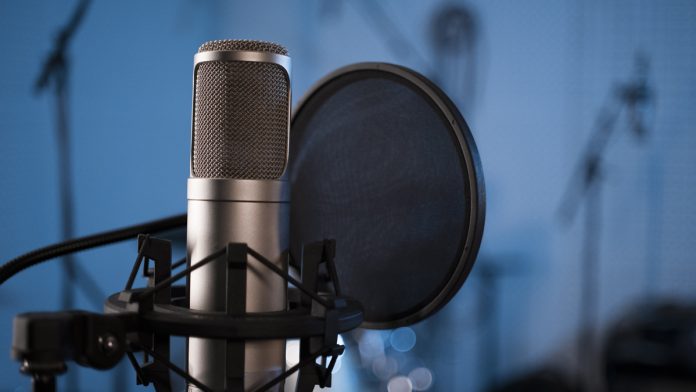Here we are going to examine the differences and merits of two primary types, Dynamic vs. Condenser Microphones. By analyzing their internal mechanisms, acoustic responses, and practical applications, we gain insight into how each performs on stage and in the studio. This guide offers a comprehensive yet concise look at their technical design and situational advantages, equipping musicians and recording engineers with essential knowledge for making informed decisions.
| Table of Contents | |
|---|---|
| I. | Transducer Technology and Working Principle |
| II. | Frequency Response and Sensitivity |
| III. | Sound Pressure Level (SPL) Handling and Headroom |
| IV. | Polar Patterns and Directionality |
| V. | Environmental Robustness and Build Quality |
| VI. | Power Requirements and Phantom Power |
| VII. | Signal-to-Noise Ratio (SNR) and Noise Floor |
| VIII. | Proximity Effect and Off-Axis Response |
| IX. | Impedance and Connectivity Considerations |
| X. | Usage Scenarios and Genre-Specific Applications |
Transducer Technology and Working Principle
Dynamic microphones use a moving-coil design where sound waves move a diaphragm attached to a coil within a magnetic field. In contrast, condenser microphones employ a capacitor system, requiring external power, to convert sound into electrical signals. Both systems have unique advantages regarding durability, sound coloration, and transient response. Their differences in transducer technology directly influence their suitability for various recording and live performance environments, offering a distinct sonic character suited to specific applications.
Frequency Response and Sensitivity
Dynamic microphones excel in handling high sound pressure levels and are known for their robust build. Meanwhile, condenser microphones provide a broader frequency response and heightened sensitivity, capturing fine details in vocals and acoustic instruments. When assessing Dynamic vs. Condenser Microphones, one finds that the frequency response of condensers tends to be more extended, making them ideal for studio settings, while dynamics are favored on stage due to their resilience and focused performance in less controlled environments.
Sound Pressure Level (SPL) Handling and Headroom
Dynamic microphones are renowned for their impressive SPL handling, making them the go-to choice for loud sound sources such as drum kits or guitar amplifiers. Condenser microphones, though highly sensitive, generally offer less headroom. This balance between sensitivity and sound pressure capability is critical in choosing the right microphone type. Understanding these differences helps engineers decide which microphone, dynamic or condenser, is better suited to manage extreme SPL conditions without distortion.
Polar Patterns and Directionality
Microphone polar patterns define how sound is captured from various angles. Dynamic microphones often feature cardioid or hypercardioid patterns that focus on a single source while rejecting off-axis noise. Condenser microphones, on the other hand, provide a range of selectable patterns including omni, bidirectional, and cardioid. This versatility allows recording professionals to tailor their sound pickup to the environment, thereby enhancing clarity and reducing unwanted ambient noise.
Environmental Robustness and Build Quality
Dynamic microphones are built with rugged construction to withstand harsh environments and heavy use, making them ideal for live performances. Condenser microphones are more delicate due to their intricate internal components. In comparing Dynamic vs. Condenser Microphones, the former is generally favored in touring applications, whereas the latter is prized in controlled studio settings where sensitivity and nuanced sound capture are paramount. Build quality and robust design are key factors in microphone selection.
Power Requirements and Phantom Power
Condenser microphones require external power, typically provided by phantom power, to operate the active electronics in their circuitry. Dynamic microphones do not need any external power, offering a plug-and-play solution for fast-paced live environments. This fundamental difference influences system compatibility and setup convenience. The power demands of condenser models demand careful consideration, especially when integrating them into smaller or budget-conscious setups, whereas dynamics provide flexibility with fewer logistical constraints.
Signal-to-Noise Ratio (SNR) and Noise Floor
A high signal-to-noise ratio ensures that a microphone captures clear sound with minimal interference. Condenser microphones generally exhibit a lower noise floor and higher SNR, making them excellent for studio recording where every detail matters. Dynamic microphones, with their simpler circuitry, might introduce a bit more inherent noise. Evaluating SNR is vital for achieving the best audio fidelity, particularly when the environment is controlled and every nuance of the performance is crucial.
Proximity Effect and Off-Axis Response
Proximity effect describes the increase in bass response when a sound source is close to a microphone. Both dynamic and condenser microphones exhibit this phenomenon, though the effect is often more pronounced in condensers. Off-axis response, the ability to handle sounds arriving from angles, is typically managed well by dynamic mics with focused polar patterns. Balancing proximity effect and off-axis performance is important for capturing a natural sound, tailored by careful microphone positioning and environment acoustics.
Impedance and Connectivity Considerations
Microphones require careful matching of impedance for optimal signal transfer. Dynamic microphones usually offer lower output impedance, which contributes to their durability and straightforward connectivity with various audio interfaces. Condenser microphones, while offering higher fidelity, often necessitate preamplification and careful impedance matching. This technical consideration plays a crucial role in the overall audio chain setup, ensuring that the microphone integrates effectively with mixing consoles and recording devices.
Usage Scenarios and Genre-Specific Applications
Selecting the right microphone is a genre-specific decision. In live settings and high-pressure environments, dynamic microphones perform reliably. Conversely, condenser microphones excel in studio recordings and applications requiring detailed articulation, such as vocal performances and acoustic instruments. When comparing Dynamic vs. Condenser Microphones, it becomes clear that each type offers advantages tailored to the musical style, performance setting, and desired sound quality, guiding professionals to the optimal tool for their specific needs.

